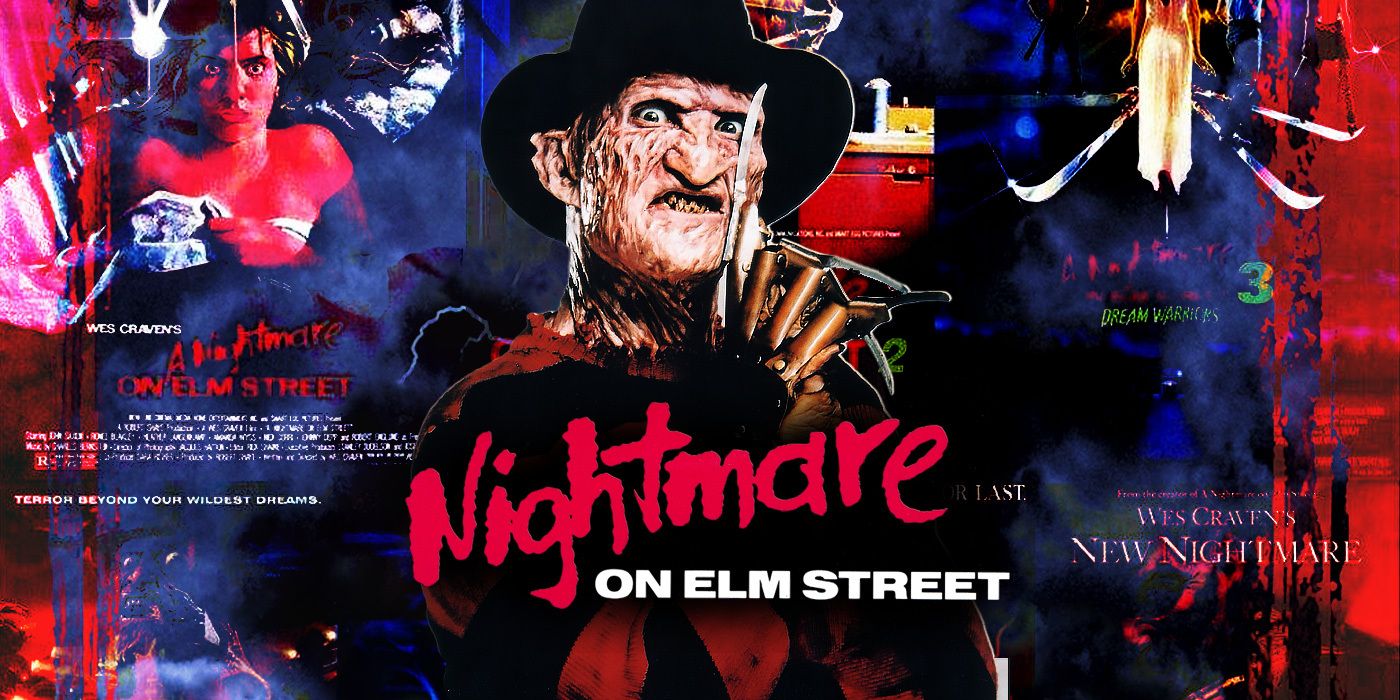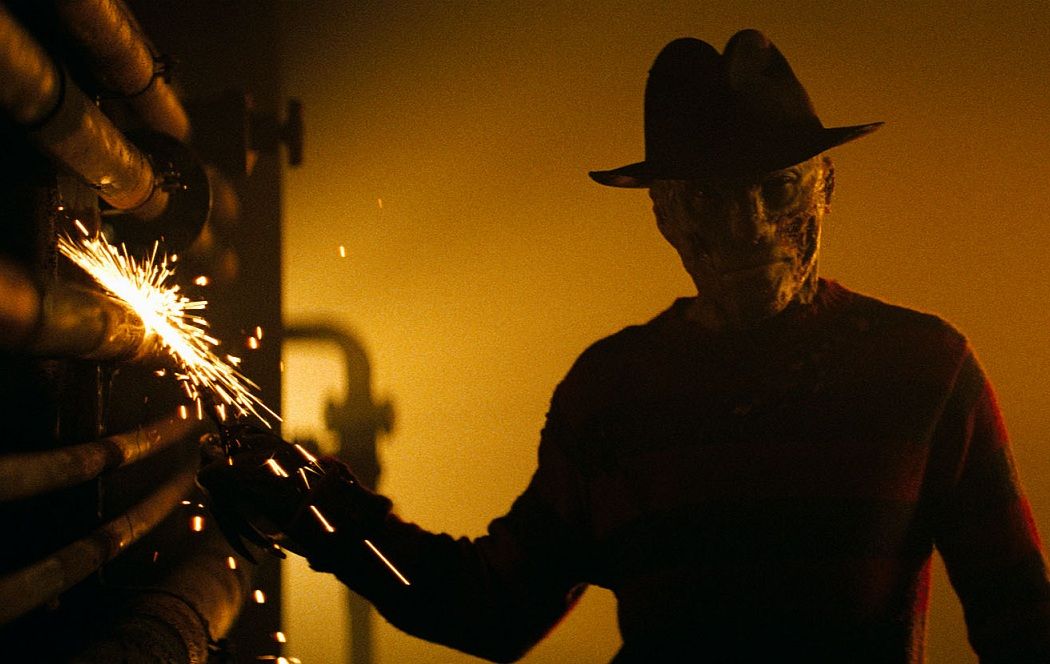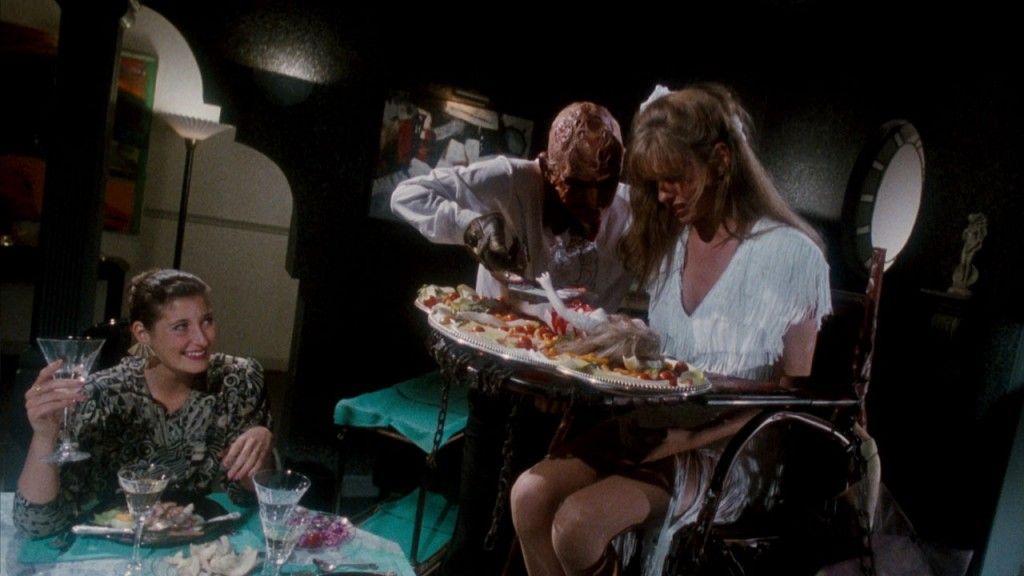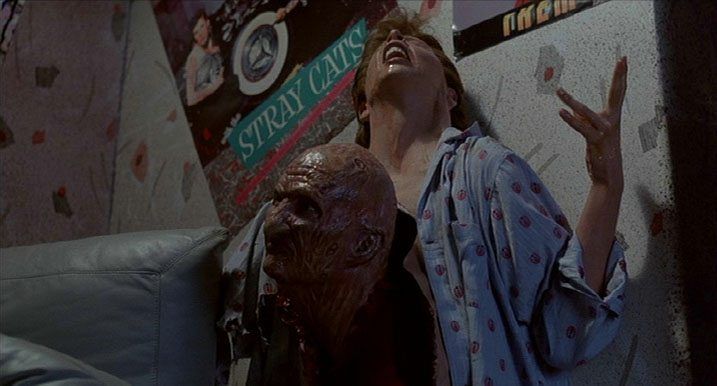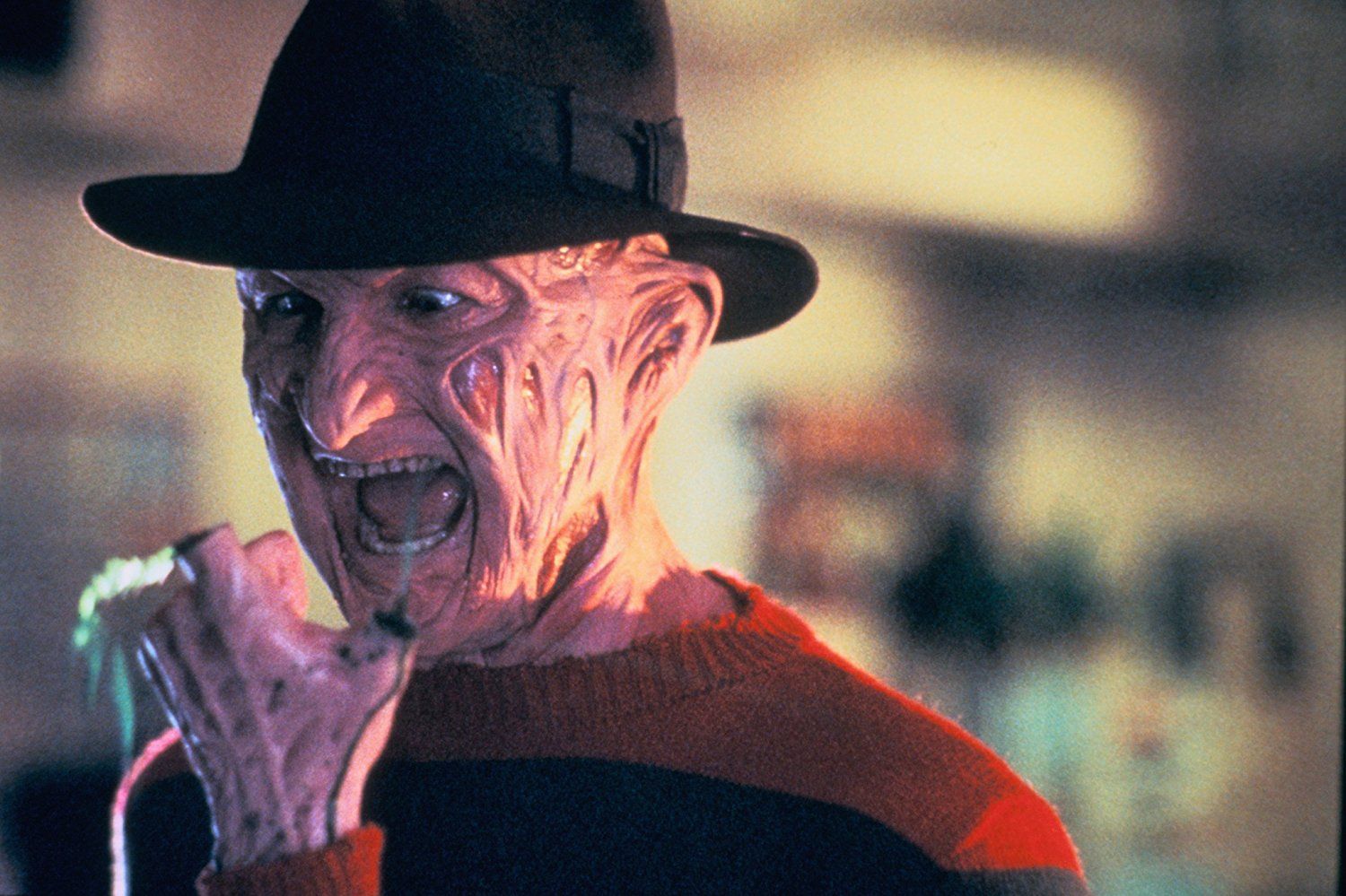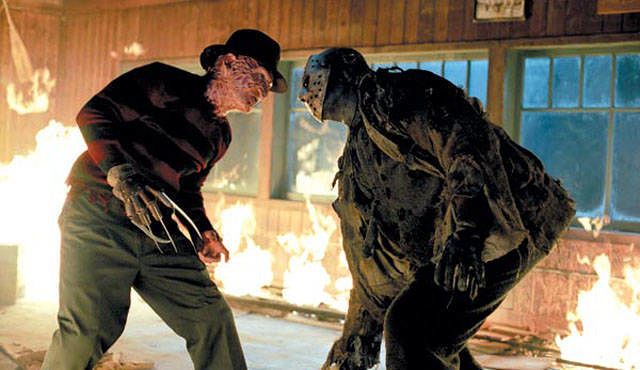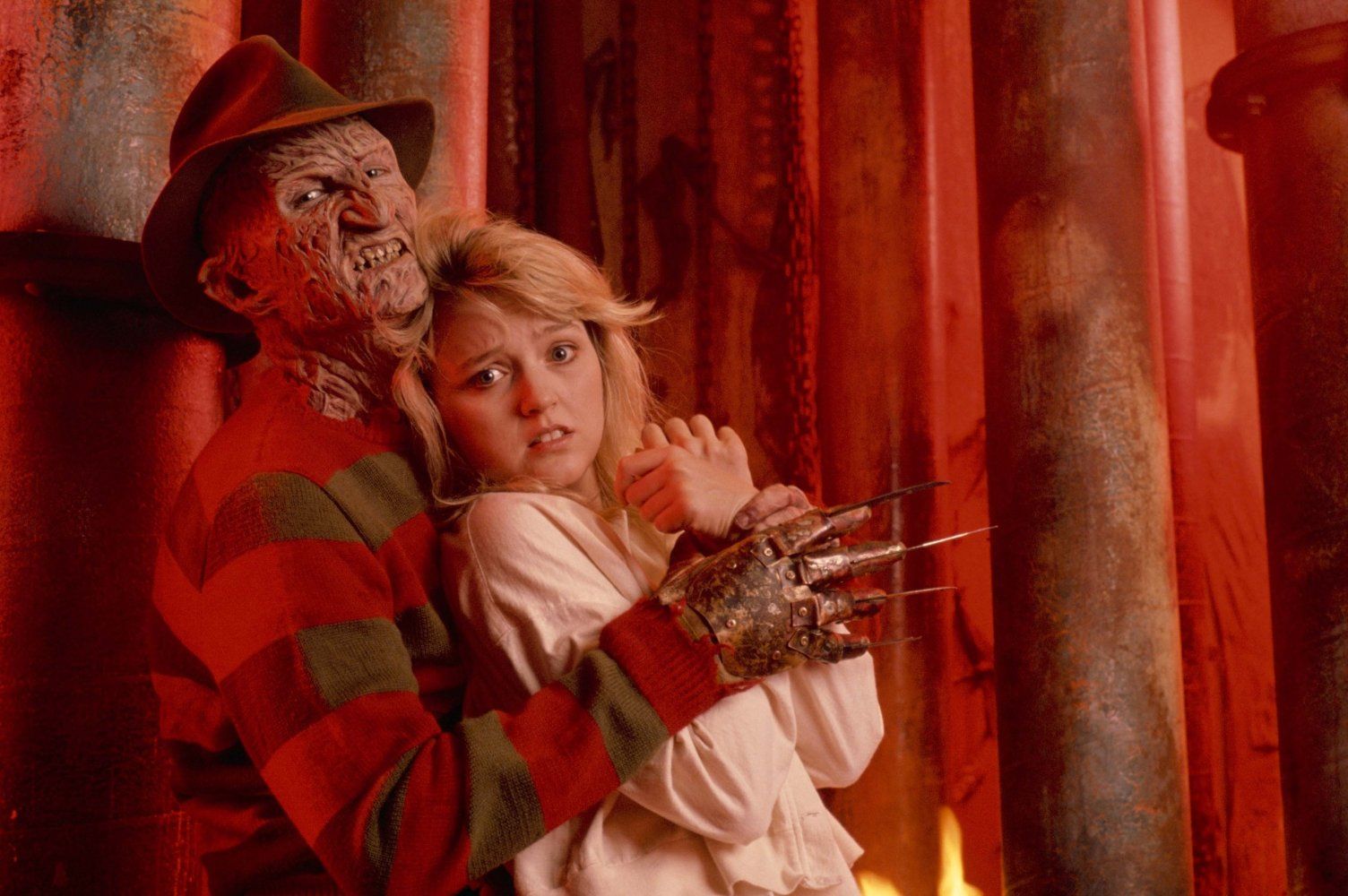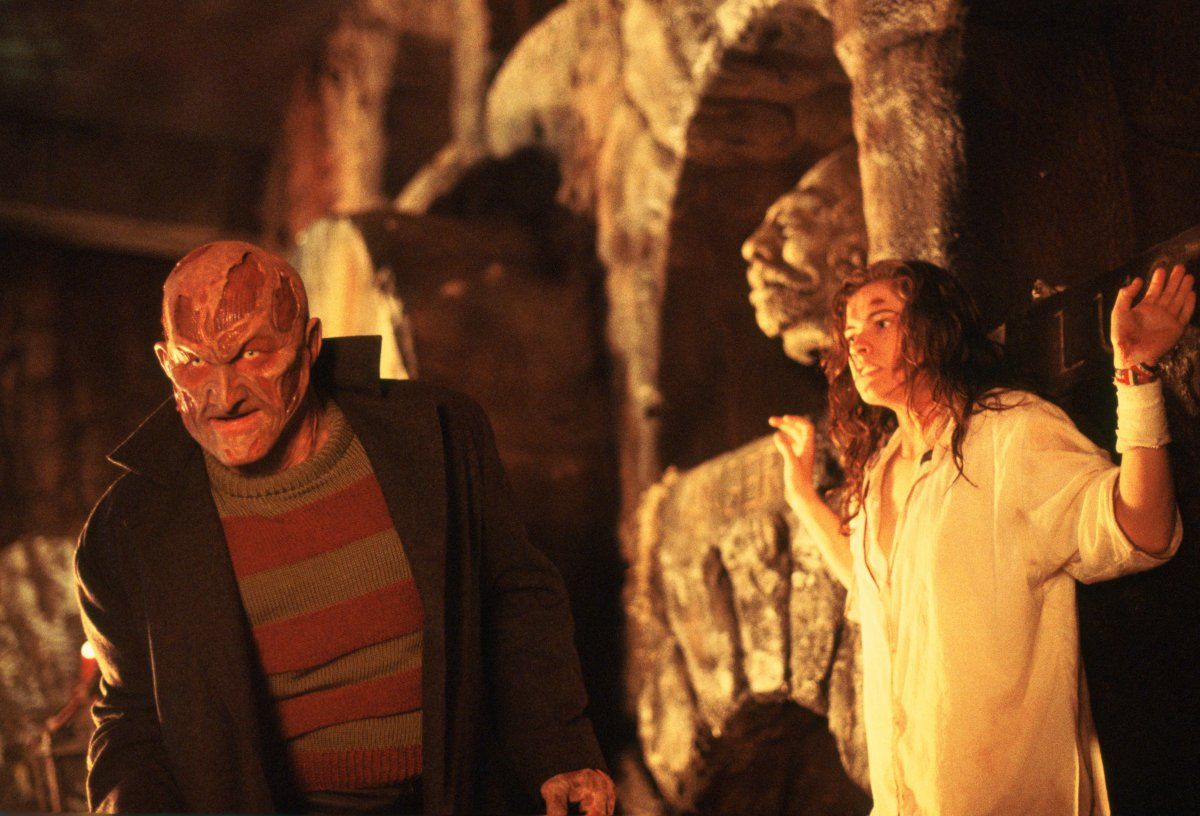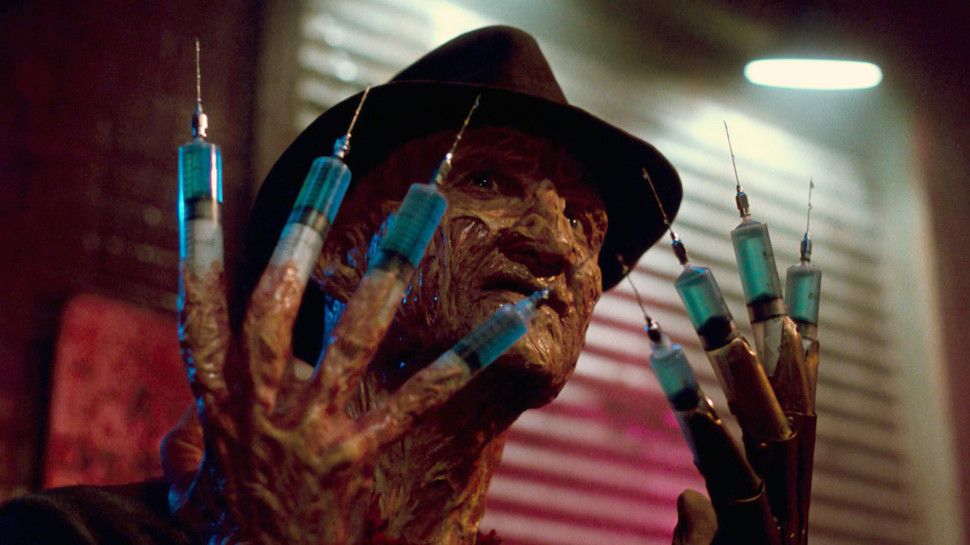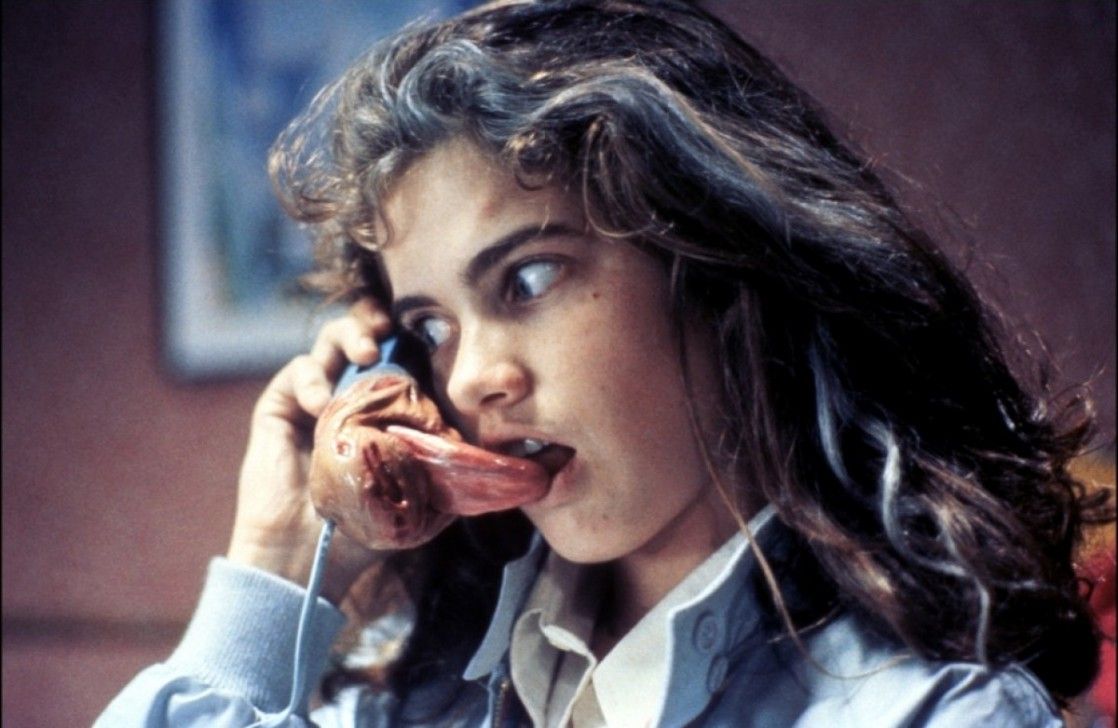When we lost Wes Craven, we lost one of the founding fathers of the modern horror film. His gifts to the genre were many, and while he would go on to reshape the slasher genre again with his meta horrors New Nightmare and Scream, Craven's most influential contribution to the landscape of horror was A Nightmare on Elm Street, the brilliant, genre-bending movie that redefined the slasher film long before Craven started getting self-referential, and launched a decades-long franchise.
At a time when the slasher film was dying -- flooded with the excess of thoughtless Halloween ripoffs and 1980s bloodbaths, Craven reinvigorated the genre by introducing an element of the supernatural and transporting the action to the world of dreams, where anything goes. With Freddy Kruger and the legacy of Elm Street, Craven created an iconic mythology that crept into the nightmares of generations and stands the test of time -- well, most of the movies do, at least.
9) A Nightmare on Elm Street (2010 Remake)
The good news is that a rewatch reveals that the Nightmare on Elm Street remake isn't as horrible as I remembered. The bad news is it's still awful. The film has a lot going for it with a great cast led by Rooney Mara, Kyle Gallner, Connie Britton and of course, Jackie Earle Haley as Freddy, who all do their best to elevate the material. Haley turns out a hell of a performance, and he's damn unnerving in the role, but the problem is his Freddy Kruger doesn't feel anything like Freddy Kruger. And that's emblematic of the film's larger problem. Director Samuel Bayer clearly set out to make a film for today's youth, which meant a grittier look, a darker tone, and a lot of unnecessary scientific explanation. Unfortunately none of that is enjoyable. The emphasis on realism and intensity turns the Elm Street remake into a dour experience that's no fun at all.
Along those lines, the film's biggest misstep is explicitly turning Freddy into a child rapist, which is about the most uncomfortable, unpleasant territory a film can venture to. The science-y stuff – the micronaps, the post-mortem brain activity, the unavoidable threat of eventual coma – that all sucks a lot of fun out of the proceedings, but there is nothing less enjoyable than watching a bunch of teenagers ruthlessly murdered by the man who molested them as children. In keeping with the "dark and gritty" mode, the film also has no desire to play with dream logic, leading to uninspired, drab dream sequences that would feel more at home in the Hostel franchise. It's so dark, so heavy, and so relentlessly dreary, the Nightmare on Elm Street remake amounts to nothing more than a grim and miserable 90 minutes that would have been more fun spent doing almost anything else.
8) A Nightmare on Elm Street 5: The Dream Child (1989)
The Dream Child is the first truly irredeemable entry in the Nightmare on Elm Street franchise and it is borderline unwatchable. The film squanders Alice, the fantastic final girl introduced in the preceding and greatly superior The Dream Master, who becomes an utter drag this time around. It also has serious daddy issues and gets lost in a boring mythology. A huge amount of the The Dream Child is dedicated to the backstory of Freddy's conception – as you probably know, his mother was raped by a hundred maniacs – and finds Freddy attempting to posses Alice's unborn son for...reasons. There's a lot of potential in the idea of a possessed unborn child, which opens up a realm of primal psychological and body horror, but it's never effectively exploited.
The film has a couple engaging kill sequences – Greta's (Erika Anderson) force-feeding death scene is a fan favorite, but even that isn't frightening, it's just gross and ridiculous. Aside from the excessive backstory, it's the uneven tone that really keeps The Dream Child from thriving. It wants Freddy to be both funnier and darker than ever, leading to a movie that doesn't know what it is. It's silly, but not fun. It's serious, but has no dramatic gravity. It's weird, but seemingly only because it can be nothing else. The Dream Child is messy, confusing, and ultimately not very entertaining.
7) A Nightmare on Elm Street 2: Freddy's Revenge (1985)
Freddy's Revenge is not good, and perhaps the biggest sin in a Nightmare on Elm Street film, it's not fun. It also makes absolutely no sense. Whatever logic and rules the first film established were casually tossed out the window to make way for a story that has no place within the grander mythology of the franchise. While all the other films are all pretty directly related, the only connection in Freddy's Revenge is the fact that the protagonist, Jesse Walsh (Mark Patton), lives in the old Thompson House and is plagued by Freddy Kruger. But he's attacked in a completely unusual way. Unlike every other film in the franchise, Freddy isn't murdering teens in their sleep; he's slowly possessing Jesse and using him as an avatar to enact his murderous desires. Jesse is becoming...a monster.
Or if you're into homosexual subtext, he's "becoming" gay. While those involved in the production have long denied the homoerotic undertones, Freddy's Revenge is most interesting when taken an allegory for a gay teenager struggling to accept his identity. There's a leather bar, there's a hunky confidant, there's fucking gym shower towel-whipping torture scene, for goodness' sake. Jesse even twerks his drawer closed. Seriously. Even if the subtext was unintentional, which is almost unfathomable, the film has become an icon of Queer Horror, and as its one redeeming quality, Freddy's Revenge a fascinating spin on the traditionally heteronormative gender dynamics of the slasher film.
6) Freddy's Dead: The Final Nightmare (1991)
Ah, Freddy's Dead. What a mindless clusterfuck of a film. And yet, it's so weird and so oddball that it's still enjoyable. That's a fairly unpopular opinion. You'll find Freddy's Dead at the bottom of most people's rankings, and I can respect that (Freddy dons a witches cap and flies around on a broom at one point, so yeah, I get it), but there's something about its wretched ridiculousness that I enjoy. It's the kind of horror film you could watch on hallucinogens and still have a great time, which is to say it's an absolute failure as a scary movie, but there's still an element of fun about it.
Freddy's Dead marks the nadir of Freddy's transformation from terrifying villain to cartoonish slapstick enthusiast. It features goofball kills – including when Freddy lays a bed of nails out underneath a falling victim, relishing in the moment like some two-bit comedian waiting for a punchline that never gets the laugh (See also: Breckin Meyer's stoner video game dream sequence). It has unnecessary celebrity cameos, including an off-brand appearance from Roseanne Barr and Tom Arnold. It has a completely left-field story that finds youth counselor Maggie Burroughs (Lisa Zane) discovering that she's Freddy's long-lost daughter (Yeah, whatever.) And yet...maybe I have too big a soft-spot for the utterly absurd. Maybe my college years fried my brain a little too much. Whatever the case may be, I still find myself turning to Freddy's Dead on occasion for a healthy dose of what-the-fuck.
5) Freddy vs. Jason (2003)
Freddy vs. Jason is a special kind of stupid. It makes no sense of as a concept and barely holds up in execution, but it's such a gleefully idiotic rampage that it's impossible not to enjoy. The concept is all there in the title. It’s literally a three-word concept. Franchise headliners Freddy Kruger and Jason Vorhees are pitted against each other in the ultimate battle to the death (or in the case of these characters, like, the 10th death). On paper, it makes no sense. The Friday the 13th and Nightmare on Elm Street films have completely different sensibilities -- the villains and their styles are completely antithetical to each other, but somehow it works. And it does a pretty damn good job of balancing those tones (though Jason gets almost all of the kills in the film).
The set up is actually pretty clever. When the people of Elm Street effectively eliminate Freddy by erasing all traces of him from history, Freddy infiltrates Jason's dreams and recruits him to make the children of Elm Street fear him again in order to regain his power. But Jason keeps killing the victims before Freddy can get to them, leading to one pissed off Kruger and the titular slasher rivalry. Jason rules the real world. Freddy rules the dream world. They fight. One loses. They fight again. The other one loses. Most importantly: they fight. For horror fans, it's delightful to watch them encroach on each other's territory, the skills of each useless in the other's realm. The other characters in the film are unremarkable, but they don't need to be anything more, because really they're just fodder leading up to the main event. When Freddy and Jason finally throw down for the climatic fight, it's an absurdly over-the-top, highly-choreographed smackdown that doesn't feel like it belongs in either film but fits just right in this haphazard mashup. It shouldn't work. These worlds shouldn't mesh. But somehow, Freddy vs. Jason is a giddy delight.
4) A Nightmare on Elm Street 4: The Dream Master
The Dream Master lives on the line of being too campy, but it lives on the right side of it. Some of it is truly goofy, and it never reaches the cohesive excellence of Dream Warriors, but it is a good bit of fun and way better than any third sequel has the right to be. A direct continuation of Dream Warriors' story, The Dream Master picks up with Kristen (recast with Tuesday Knight) and her fellow survivors, only to see them quickly dispatched to make way for new blood. The Dream Master gives us Alice (Lisa Wilcox), the third and last great final girl of the franchise, who transitions from feeble girl to empowered young woman by the film's end.
The Dream Master takes the highlights of Dream Warriors – funny Freddy, elaborate kill scenes, top-notch effects – and turns them up to full volume. It's a bit blaring, but a good hook is still enjoyable, even when it's too loud. It's undeniably Freddy past his prime, but it's also undeniably still Freddy (as opposed to the caricature of himself he becomes in the later films). It also boasts one of the franchise-best nightmare sequences as the bug-phobic Debbie’s (Brooke Theiss) undergoes a Cronenbergian transformation into a cockroach. The Dream Master is A Nightmare on Elm Street in the skin of a summer blockbuster, and while the film marks the beginning Freddy's decline from a horrific villain to freaky funny-guy, it's still a blast to watch and feels right at home in the ANOES cannon.
3) Wes Craven's New Nightmare
New Nightmare is barely a Nightmare on Elm Street sequel. It's almost more of a spin-off. But's it's wonderful. It's also Wes Craven's prototype for Scream, in which he flexed his meta-muscles for the first time, utterly obliterating the fourth wall with a ballsy, cerebral mindfuck. After years away from the franchise, Craven returned to write, direct and even star in the film alongside returning original Elm Street cast members Heather Langenkamp, Robert Englund and John Saxon, all of whom play themselves in the film. When character-Craven dreams an idea for a new Nightmare sequel, he recruits Langenkamp to return as Nancy, unleashing a series of events that blur the lines between fiction and reality. While delivering an utter head trip of meta madness, Craven also touches on some pointed issues like the effect of violent cinema on young minds, explored via Langenkamp's son, Dylan (Miko Hughes in his second best freaky kid performance after Pet Semetary), who starts experiencing fits of terror after he catches the original Nightmare on Elm Street on TV.
If there's one thing that prevents New Nightmare from rising higher on the list, it's the fact that, while it was an unprecedented, groundbreaking horror film, it's not really all that much of a Nightmare on Elm Street film. The dream sequences are an afterthought and Freddy's barely a presence. He doesn't look like Freddy, he doesn't act like Freddy, he doesn't quip like Freddy – and well...that's because he isn't Freddy, but an ancient evil assuming his guise. New Nightmare is a wildly subversive and inventive movie, and a horror highlight of the '90s, but it feels more like a cousin to the Nightmare franchise than a proper sequel. All the same, it's borne out the same roots and easily earns a top spot.
2) A Nightmare On Elm Street 3: Dream Warriors
The only reason Dream Warriors ranks second is because there can only be one first place. Next to the original, it's the most perfect A Nightmare On Elm Street ever got. Dream Warriors is faithful to the logic of the universe established in the first film, but expands the mythology and ups the action in the way that only the best sequels do. By introducing lucid dreaming as a combat technique, Dream Warriors gave the kids a means to fight back against Freddy, making it so much more fun than the hopeless execution parade slasher films tend to be. It also gave us two fantastic final girls for the price of one, introducing Kristen (Patricia Arquette, who sadly did not reprise her role in the sequel) and bringing back Nancy (Langenkamp) in a way that both made perfect sense and gave her arc a proper resolution lacking in the first film's studio-mandated, tacked-on ending (Craven did not like the stinger that painted Freddy as the winner, but the studio wanted to leave it open to a sequel).
With Craven back in the saddle as co-writer of the script and Chuck Russell confidently taking the helm, Dream Warriors delivers the most likable cast of characters in any Elm Street film alongside some of the best set-pieces and most imaginative kills of the franchise -- and they're all so damn intimate, form-fitted to the victims. Jennifer (Penelope Sudrow) wants to be an actress, so Freddy thrusts her head-first into a television set, screaming "Welcome to prime time, bitch!" The mute Joey (Rodney Eastman) is literally tongue-tied over a hell pit. And perhaps the most vicious, Freddy transforms his claws into syringes, injecting recovering addict Taryn (Jennifer Ruben) with a lethal overdose. Most importantly, Dream Warriors is the movie where Freddy became Freddy as we know him now; the quippy, sadistic monster that's always just slightly more entertaining than terrifying. In terms of horror sequels, they just don't get better than Dream Warriors.
1) A Nightmare on Elm Street
It's the obvious choice, but it's also the right one. To quote a later Craven film, you don't fuck with the original. A Nightmare on Elm Street is the visionary film that built the world that spawned the legacy. It gave us Nancy, and Elm Street, and Freddy's nursery rhyme. And of course, it gave us Freddy Kruger himself, brilliantly portrayed by Robert Englund with the perfect blend of menace, grandeur, and playfulness. His persona, his jaunty sadism, his look – the burnt skin, the claw glove, the red and green sweater – and the fresh hell he brought with him were so individual and so well-defined that he became an instant icon. And a villain like Freddy could only be rivaled by a formidable opponent like Nancy Thompson, the most relatable and pro-active final girl of the era.
Craven's great legacy is that he's a director who redefined the horror genre three times, and Nightmare on Elm Street may be his finest achievement in that regard. In the peak of the slasher craze (there were already 3 installments of Halloween and Friday the 13th each, and a parade of knock-offs by the time ANOES was released), Craven stretched the boundaries of the genre and reshaped them into something wholly original. By transposing the horror into dreamscapes, Craven opened up a world of countless unprecedented scares, and the creative freedom of dream logic led him to innovative set pieces. Using straightforward, but gleefully clever practical effects, Craven crafted horrific moments of helplessness that still resonate – A geyser of blood shooting out of the bed that sucked up baby Johnny Depp, Freddy's glove emerging from the still waters of Nancy's bath, Tina (Amanda Wyss) writhing around on the ceiling, Nancy's feet sucked into the stairs as she tries to run away. They're all so simple, so primal, but so clever and impeccably executed. From the concept to the imagery to the characters, Craven crafted a horror film that attacked the visceral and the cerebral in equal measure, with a mythology that would spawn a cult of personality around it's unkillable villain and an equally unkillable franchise.

